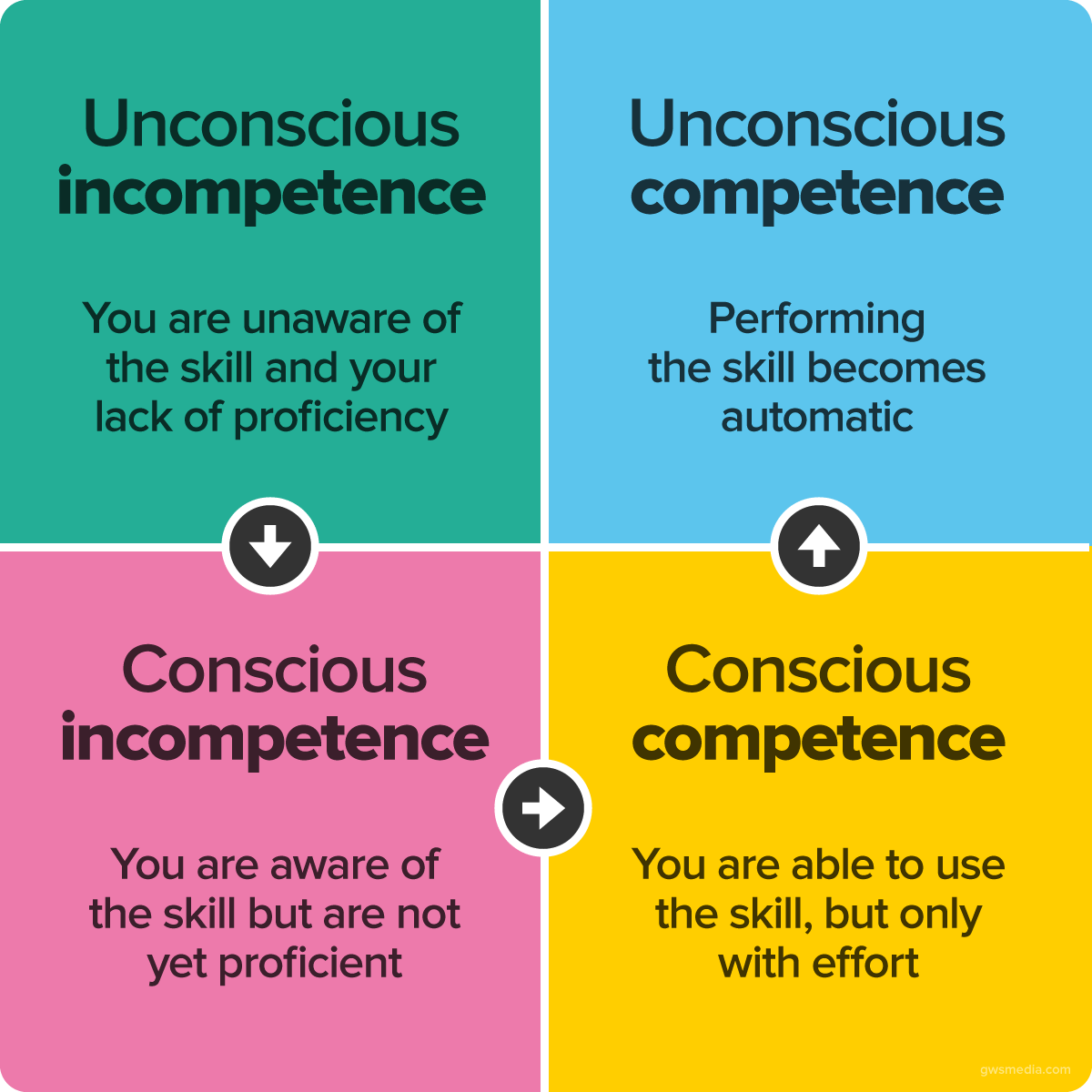
Management Guide: Four Stages of Competence
Are You Hiring?
Find candidates in 72 Hours with 5+ million talents in Maukerja Malaysia & Ricebowl using Instant Job Ads.
HIRE NOW
Finding out what you don't know
Everyone has been there. You would learn something new. At first, it feels easy, then, at some point, learning gets a little harder. You feel confused about parts of the new process. At this point, you understand that there are things you didn’t know that was not clear when you started the learning process.
Basically, you didn’t know what you didn’t know.
Eventually, if you stay learning you will bust through and become proficient at the new skill. Yes, at first you will need to focus to do things correctly, but that will pass. Then one day, after enough practice, you will master the skill, no longer feeling the struggle.
The Conscious Competence Ladder
This process of learning is popular, and there is even a model that describes the cycle that everybody goes through when learning new skills. It's called the Conscious Competence Ladder, or simply the Four Stages of Learning:
1. Unconscious Incompetence
In this context, incompetence is different from being inept. It is only the first step where everyone learns a new skill. At some point, we all have needed to learn a new skill by starting from a position of incompetence.
In the workplace, the learning process is different. There are standards to be upheld, organisational needs to be achieved, and employee satisfaction to be managed. In short, it is more challenging.
For example, let’s say you’ve employed a new administrative assistant. It’s an entry-level job, and apparently, anyone should be able to do it. After showing the recruit around, you sit him down and say, “You have to do three things: answer the phones, take messages, and file these reports.” The new hire is eager and not afraid to start working.
After a few hours, you come back and ask the new employee if you have any messages. He smiles and gives you a few pieces of papers, each with a name and the time they called, but no return numbers or messages. The new employee has also filed all of the reports alphabetically, but by the client’s first name. He is not aware that he has made any errors.
2. Conscious Incompetence
This employee is in the first stage of his learning journey. To advance to the next level, we must make him aware of his faults without demoralising him. In other words, we will need to bring his need for learning to the conscious level.
In this process, we will need to keep him motivated, supported, and encouraged during this transition. Thank him for his efforts, and immediately move to proper filing techniques (alphabetical by last name) and calling protocols (call back numbers and messages). You should also find out what other skills he may need to learn and train him those skills as well.

A simple infographic explains the concept of the competency hierarchy.
3. Conscious Competence - Skill
Just because an employee has learned the fundamentals doesn’t mean that they are “finished” with the learning process. After being trained in a new skill, the employees will need time to practice and gain confidence. We will need to give our learners opportunities to use their new skills as frequently as possible after they learn them.
Transitioning to conscious competence will result in feelings of accomplishment. You will help the employees realise that their success is not dependent on luck, but a matter of hard work and determination. Acknowledge your employees for their efforts.
4. Unconscious Competence - Mastery
At this stage, individuals can perform their tasks without even thinking about them. They return to the “bliss” of stage one, but for different reasons. What used to be a struggle has now become something natural to them.
There is a new danger at the mastery stage of learning: boredom. It’s crucial for the good of your employees and your organisation to continue challenging them to learn more and continue to grow on the job. You might want to consider peer coaching, where employees teach each other skills.
How to use this model
-
Start every learning intervention with an assessment of where your employees are in the learning ladder.
-
Help the employees become aware of how much they know or don’t know, and of what they “think” they know but may be doing wrong. Use this as a starting point to move your learners up the ladder.
-
Finally, keep in mind that learners may go back down the ladder if they don’t have a chance to reinforce newly learned skills, or practice them regularly. So give them those opportunities as well.
These are the basics of the Four Stages of Competence, and you now know what it takes to take your employees from "good" to "great".
Source: SH!FT
Would you like to learn more about AJobThing?
Articles you might be interested in
Medical and Hospitalization Leave in Malaysia
From Basic Salary to Minimum Wage: All About Pay in Malaysia
Employers Fined RM2,500 For Late Submission of Accident Reports to SOCSO

